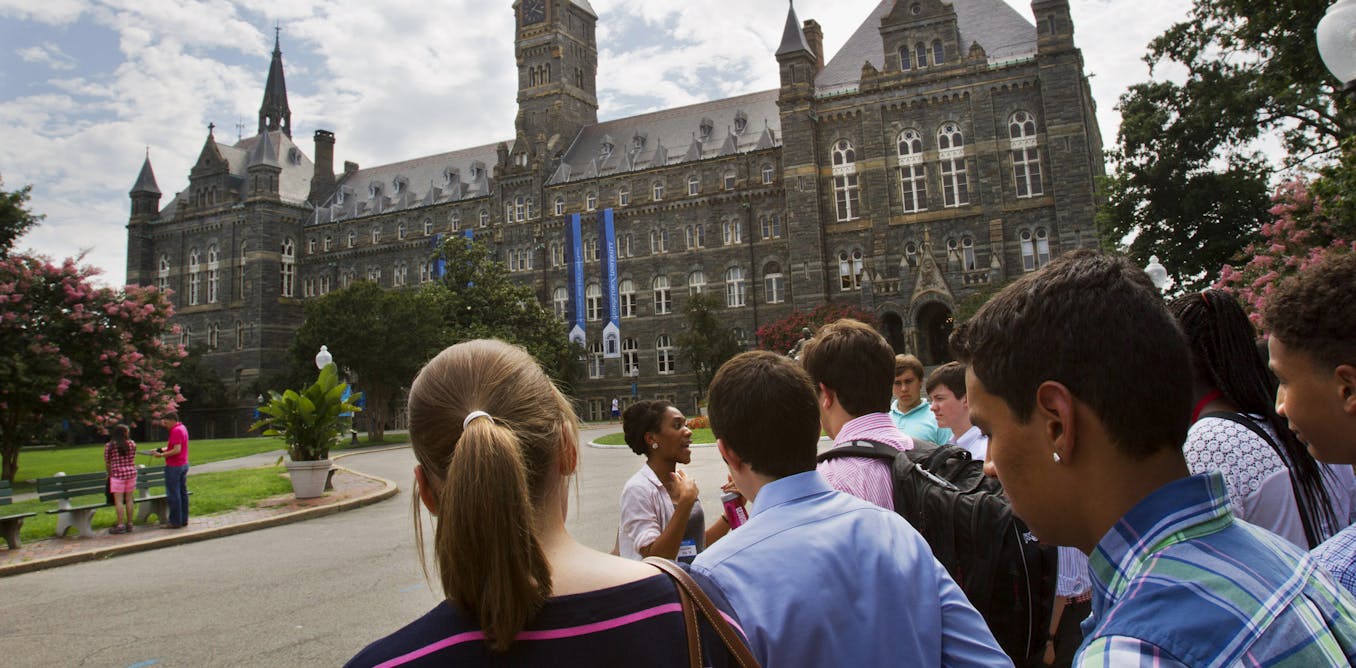With the Trump administration seeking to cut federal funding for colleges and universities, you might be wondering whether the endowments of these institutions of higher education might be able to fill those gaps. Todd L. Ely, a professor of public administration at the University of Colorado Denver, explains what endowments are and the constraints placed on them.
What’s an endowment?
Endowments are pools of financial investments that belong to a nonprofit. These assets produce a revenue stream, typically from dividends, interest and realized capital gains. The funds endowments hold usually originate as charitable donations made to support an institution’s mission.
In most cases with higher education endowments, this wealth, which helps buoy a nonprofit’s budget, is supposed to last forever.
Contributions to endowments are tax-deductible for donors who itemize their tax returns. Once these funds are invested, they grow generally tax-free. But beginning in 2018, the federal government imposed a 1.4% excise tax on dozens of higher education institutions with relatively large endowments.
Few colleges or universities have a single endowment fund.
That’s because the donors who provide gifts large and small to the school over the years direct their donations to different funds reserved for specific purposes.
Harvard University’s endowment, worth $53.2 billion at the end of its 2024 fiscal year, for example, consists of roughly 14,600 distinct funds.
All told, money distributed from endowments covered more than 15%, on average, of college and university operating expenses in 2024. Some of America’s institutions of higher education, however, lean much more heavily than that on their endowments to pay their bills.
AP Photo/Reed Saxon
How do endowments influence higher education?
Endowments can serve multiple purposes.
In 2024, nearly half of all higher education spending paid for with endowment revenue funded scholarships and other kinds of aid for students, while almost 18% supported academic programs. Just under 11% paid for professors’ compensation, and almost 7% helped pay for running and maintaining campus facilities.
More broadly, endowments can help shield schools from financial hardships and maintain their long-term reputations.
When they’re set up to carry on in perpetuity, endowments must benefit both current and future generations. So when donors give to an endowment, they are arguably investing in the long-term viability of the institution.
This long-term focus suggests that endowments aren’t just rainy-day funds or financial reserves.
Why can’t endowment funds be spent freely?
At the end of the 2023 fiscal year, U.S. higher education endowments held a total of more than $907 billion. That is a lot of money, but it’s still less than the combined wealth of America’s five richest people.
Like individual wealth, endowment assets are heavily concentrated in the U.S.
Many colleges and universities have small or no endowments. Nearly 60% of them total less than $50 million. The top 25, which includes several public universities in states such as Michigan and Texas, account for more than half of all endowment assets.
And even when schools have large endowments, the individual funds that compose them are bound by a wide array of restrictions. Some of that money can be spent however the school would like. Other funds are dedicated to a clearly defined purpose.
When endowment funds are restricted, the school gets little discretion in how to spend them.
At Harvard, for example, there’s a Hollis Professorship of Divinity at Harvard University. It was established in 1721 through a gift from a London merchant. Based on the terms of that long-ago donation, the earnings and growth of the donated funds continue to honor the donor’s intent by supporting the position, regardless of what the university needs.
Alternatively, endowments may receive donations that are temporarily restricted. Known as “term” endowments, the assets they hold can be used once donor-imposed conditions are fulfilled.
Institutions frequently designate some of their unrestricted funds as “quasi” endowments, usually earmarked for specific strategic purposes. This board-designated quasi-endowment does not carry legal restrictions and can be spent more freely.
About 40% of higher education endowment assets are subject to permanent restrictions, 30% are temporarily restricted, and 29% are reserved for quasi-endowment use.

AP Photo/Steven Senne
How are decisions over endowment funds made?
The decision-making authority over endowments typically rests with a college or university’s governing board. Those boards establish endowment payout policies that guide how much of the endowment and its earnings can be spent each year, while attempting to preserve the purchasing power of the investments over the long term.
The policies take expectations regarding investment earnings and inflation into account, while smoothing annual payouts by using a percentage of the value of the endowment over multiple years as opposed to a single point in time. This payout tends to amount to about 5% of all assets. That share averaged 4.8% in 2024.
U.S. institutions of higher education spent nearly $35.5 billion derived from their endowments in the 2023 fiscal year.
Colleges and universities that depend more heavily on their endowment funds to cover their current obligations may choose to invest more conservatively. In recent years, many higher education endowments have obtained more complex investments, such as private equity, real assets and stakes in hedge funds.
Endowments of nonprofit colleges and universities are also governed in most states by a state law known as the Uniform Prudent Management of Institutional Funds Act. This law encourages cautious investments and restrained spending.
These restrictions mean that annual payouts are generally modest. That leaves endowments ill-equipped to respond to abrupt and large shifts in their funding needs.
The John F. Kennedy School of Government, commonly referred to as Harvard Kennedy School, is a member of The Conversation U.S.




